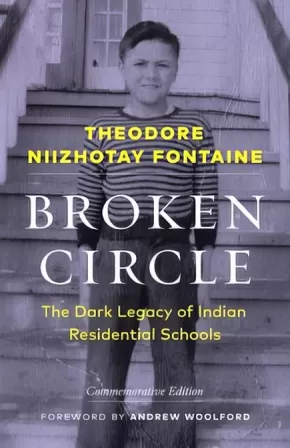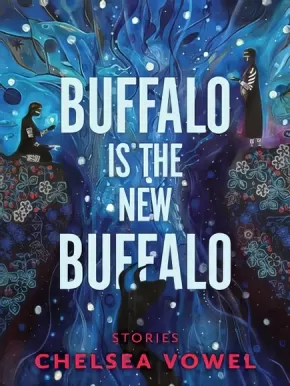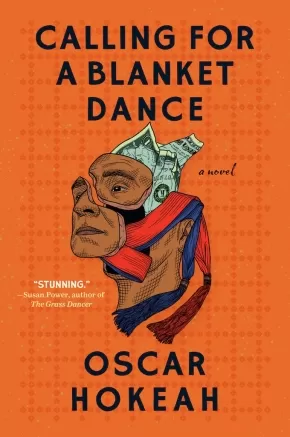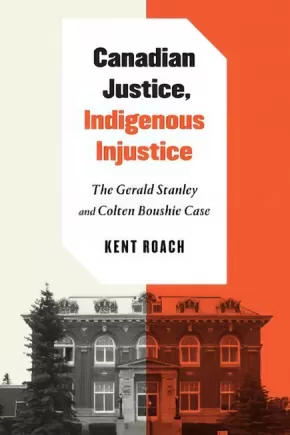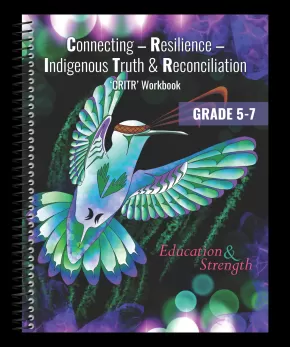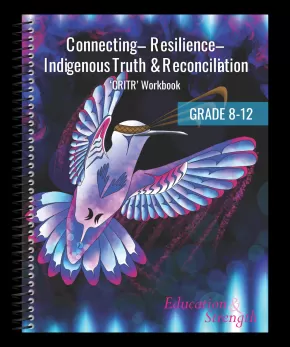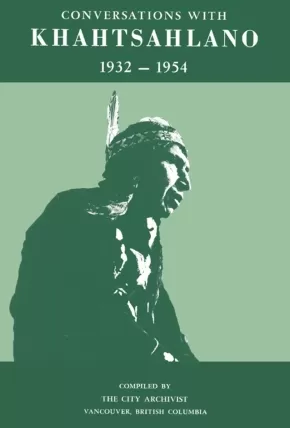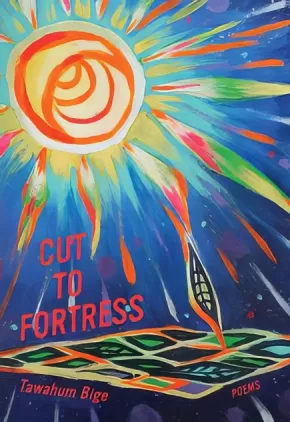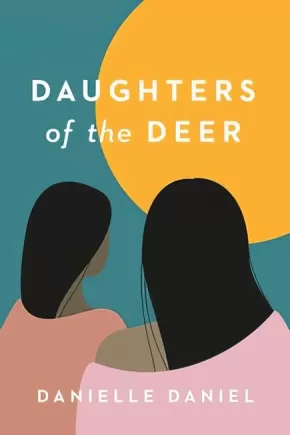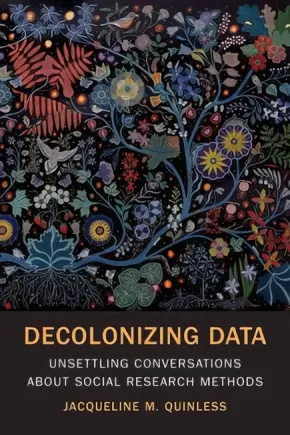
Books
541
-
555
of
1928 Results;
Sort By
Go To
of 129
Braided Learning: Illuminating Indigenous Presence through Art and Story
$29.95
Format:
Paperback
Text Content Territories:
Indigenous Canadian; First Nations; Inuit; Métis;
ISBN / Barcode: 9780774880794
Synopsis:
Synopsis:
The Truth and Reconciliation Commission and Indigenous activism have made many non-Indigenous Canadians uncomfortably aware of how little they know about First Nations, Métis, and Inuit peoples. In Braided Learning, Susan Dion shares her approach to engaging with Indigenous histories and perspectives. Using the power of stories and artwork, Dion offers respectful ways to learn from and teach about challenging topics including settler-colonialism, treaties, the Indian Act, residential schools, and the Sixties Scoop. Informed by Indigenous pedagogy, Braided Learning draws on Indigenous knowledge to make sense of a difficult past, decode unjust conditions in the present, and work toward a more equitable future.
This book is a must-read for teachers and education students. It should also be read by students and practitioners in social work, child and youth counselling, policing, and nursing, or anyone seeking a foundational understanding of the histories of Indigenous peoples and of settler colonialism in Canada.
Reviews
“This book should be in every educator’s library. It serves as a model for educators to learn and teach about the history of Indigenous peoples and settler colonialism without fear or reservation. It is exactly what has been asked for over and over again.”— Tracey Laverty, First Nations, Inuit and Métis Education, Saskatoon Public Schools
"Braided Learning is a safe learning space for people at the start of their learning journey about Indigenous education and history. Each reader will take away the parts of the stories that are important to them, just like listeners do when we hear stories in the lodge from our elders. Nobody tells you what to do – you figure it out yourself with some subtle guidance." — Deb St. Amant, elder-in-residence, Faculty of Education, Queen’s University
"Understanding how educators can participate in reconciliation means understanding what stands in the way. Susan Dion understands both. Highly readable, engaging, and passionate, this book moves teachers from apprehension to action. Educators of all levels, read this book and take heed of Dion’s question: “So what are you going to do now?” — Amanda Gebhard, co-editor of White Benevolence: Racism and Colonial Violence in the Helping Professions
Educator Information
Table of Contents
Introduction: Indigenous Presence
1 Requisites for Reconciliation
2 Seeing Yourself in Relationship with Settler Colonialism
3 The Historical Timeline: Refusing Absence, Knowing Presence, and Being Indigenous
4 Learning from Contemporary Indigenous Artists
5 The Braiding Histories Stories / Co-written with Michael R. Dion
Conclusion: Wuleelham – Make Good Tracks
Glossary and Additional Resources: Making Connections, Extending Learning
Notes; Bibliography
Additional Information
288 pages | 6.00" x 9.00" | Paperback
Broken Circle: The Dark Legacy of Indian Residential Schools-Commemorative Edition - 2nd Edition
$24.95
Format:
Paperback
Text Content Territories:
Indigenous Canadian; First Nations; Anishinaabeg; Sagkeeng;
Reading Level: N/A
ISBN / Barcode: 9781772034158
Synopsis:
Synopsis:
A new commemorative edition of Theodore Fontaine's powerful, groundbreaking memoir of survival and healing after years of residential school abuse.
Originally published in 2010, Broken Circle: The Dark Legacy of Indian Residential Schools chronicles the impact of Theodore Fontaine’s harrowing experiences at Fort Alexander and Assiniboia Indian Residential Schools, including psychological, emotional, and sexual abuse; disconnection from his language and culture; and the loss of his family and community. Told as remembrances infused with insights gained through his long healing process, Fontaine goes beyond the details of the abuse that he suffered to relate a unique understanding of why most residential school survivors have post-traumatic stress disorders and why succeeding generations of Indigenous children suffer from this dark chapter in history. With a new foreword by Andrew Woolford, professor of sociology and criminology at the University of Manitoba, this commemorative edition will continue to serve as a powerful testament to survival, self-discovery, and healing.
Reviews
"Broken Circle is a life story of Mr. Fontaine and he said it like it was; 'his personal story affirms the tragedy that occurred during this era and the impacts it has on our Indigenous people today'. Mr. Fontaine's humbleness and care for his people was remarkable and no words will ever express what he meant to his people on Turtle Island." —Chief Derrick Henderson, Sagkeeng First Nation
“Theodore Fontaine has written a testimony that should be mandatory reading for everyone out there who has ever wondered, 'Why can’t Aboriginal people just get over Residential Schools?' Mr. Fontaine’s life story is filled with astonishing and brutal chapters, but, through it all, time, healing, crying, writing, friends and family, and love—sweet love—have all graced their way into the man, father, son, brother, husband, and child of wonder Theodore has always deserved to be. What a humbling work to read. I’m grateful he wrote it and had the courage to share it. Mahsi cho." —Richard Van Camp, Tłįchǫ author of The Lesser Blessed and Moccasin Square Gardens
Additional Information
224 pages | 5.50" x 8.50" | 2nd Edition | Paperback
Buffalo Is the New Buffalo
$23.95
Format:
Paperback
Text Content Territories:
Indigenous Canadian; Métis;
ISBN / Barcode: 9781551528793
Synopsis:
Synopsis:
Powerful stories of "Metis futurism" that envision a world without violence, capitalism, or colonization.
"Education is the new buffalo" is a metaphor widely used among Indigenous peoples in Canada to signify the importance of education to their survival and ability to support themselves, as once Plains nations supported themselves as buffalo peoples. The assumption is that many of the pre-Contact ways of living are forever gone, so adaptation is necessary. But Chelsea Vowel asks, "Instead of accepting that the buffalo, and our ancestral ways, will never come back, what if we simply ensure that they do?"
Inspired by classic and contemporary speculative fiction, Buffalo Is the New Buffalo explores science fiction tropes through a Metis lens: a Two-Spirit rougarou (shapeshifter) in the nineteenth century tries to solve a murder in her community and joins the nehiyaw-pwat (Iron Confederacy) in order to successfully stop Canadian colonial expansion into the West. A Metis man is gored by a radioactive bison, gaining super strength, but losing the ability to be remembered by anyone not related to him by blood. Nanites babble to babies in Cree, virtual reality teaches transformation, foxes take human form and wreak havoc on hearts, buffalo roam free, and beings grapple with the thorny problem of healing from colonialism.
Indigenous futurisms seek to discover the impact of colonization, remove its psychological baggage, and recover ancestral traditions. These eight short stories of "Metis futurism" explore Indigenous existence and resistance through the specific lens of being Metis. Expansive and eye-opening, Buffalo Is the New Buffalo rewrites our shared history in provocative and exciting ways.
Additional Information
272 pages | 6.00" x 8.00" | Paperback
Call Me Indian: From the Trauma of Residential School to Becoming the NHL's First Treaty Indigenous Player
$21.00
Format:
Paperback
Text Content Territories:
Indigenous Canadian; First Nations; Cree (Nehiyawak); Plains Cree; Ahtahkakoop Cree Nation;
Reading Level: N/A
ISBN / Barcode: 9780735240032
Synopsis:
Synopsis:
Trailblazer. Residential school Survivor. First Treaty Indigenous player in the NHL. All of these descriptions are true--but none of them tell the whole story.
Fred Sasakamoose, torn from his home at the age of seven, endured the horrors of residential school for a decade before becoming one of 120 players in the most elite hockey league in the world. He has been heralded as the first Indigenous player with Treaty status in the NHL, making his official debut as a 1954 Chicago Black Hawks player on Hockey Night in Canada and teaching Foster Hewitt how to pronounce his name. Sasakamoose played against such legends as Gordie Howe, Jean Beliveau, and Maurice Richard. After twelve games, he returned home.
When people tell Sasakamoose's story, this is usually where they end it. They say he left the NHL to return to the family and culture that the Canadian government had ripped away from him. That returning to his family and home was more important to him than an NHL career. But there was much more to his decision than that. Understanding Sasakamoose's choice means acknowledging the dislocation and treatment of generations of Indigenous peoples. It means considering how a man who spent his childhood as a ward of the government would hear those supposedly golden words: "You are Black Hawks property."
Sasakamoose's story was far from over once his NHL days concluded. He continued to play for another decade in leagues around Western Canada. He became a band councillor, served as Chief, and established athletic programs for kids. He paved a way for youth to find solace and meaning in sports for generations to come. Yet, threaded through these impressive accomplishments were periods of heartbreak and unimaginable tragedy--as well moments of passion and great joy.
This isn't just a hockey story; Sasakamoose's groundbreaking memoir sheds piercing light on Canadian history and Indigenous politics, and follows this extraordinary man's journey to reclaim pride in an identity and a heritage that had previously been used against him.
Reviews
“Fred Sasakamoose played in the NHL before First Nations people had the right to vote in Canada. This page turner will have you cheering for “Fast Freddy” as he faces off against huge challenges both on and off the ice—a great gift to every proud hockey fan, Canadian, and Indigenous person.”—Wab Kinew, Leader of the Manitoba NDP and author of The Reason You Walk
“Call Me Indian needs to be in every library and on every school curriculum in Canada. Fred Sasakamoose’s story is gripping and powerfully told—a story of triumph and tragedy, of great success and the perils of excess. There is laughter and tears here aplenty, but also inspiration. Characters as large as Gordie Howe and Bobby Hull are easily matched by the likes of Moosum, Freddy’s grandfather; Father Roussel, the only good to be found in residential school; George Vogan, who always believed in Fred—and Loretta, who loved him, gave him family, and ultimately saved him.”—Roy MacGregor, bestselling author of Chief: The Fearless Vision of Billy Diamond and Canadians: Portrait of a Country
Additional Information
288 pages | 5.20" x 7.94" | 8 pp 4/c photo insert
Meg Masters assisted Fred in writing his memoir. She is a Toronto-based writer and editor who has worked with many bestselling Canadian authors.
Calling for a Blanket Dance (HC) (12 in Stock) - ON SALE
$25.00 $34.00
Format:
Hardcover
Text Content Territories:
Indigenous American; Native American; Cherokee; Kiowa;
Reading Level: N/A
ISBN / Barcode: 9781643751474
Synopsis:
Synopsis:
A moving and deeply engaging debut novel about a young Native American man finding strength in his familial identity, from a stellar new voice in fiction.
Told in a series of voices, Calling for a Blanket Dance takes us into the life of Ever Geimausaddle through the multigenerational perspectives of his family as they face myriad obstacles. His father’s injury at the hands of corrupt police, his mother's struggle to hold on to her job and care for her husband, the constant resettlement of the family, and the legacy of centuries of injustice all intensify Ever’s bottled-up rage. Meanwhile, all of Ever’s relatives have ideas about who he is and who he should be. His Cherokee grandmother urges the family to move across Oklahoma to find security; his grandfather hopes to reunite him with his heritage through traditional gourd dances; his Kiowa cousin reminds him that he’s connected to an ancestral past. And once an adult, Ever must take the strength given to him by his relatives to save not only himself but also the next generation of family.
How will this young man visualize a place for himself when the world hasn’t given him a place to start with? Honest, heartbreaking, and ultimately uplifting, Calling for a Blanket Dance is the story of how Ever Geimausaddle found his way to home.
Reviews
“Calling for a Blanket Dance is a stunning novel. Oscar Hokeah writes from deep inside the heart of his communities, bringing life to generations of voices who became so real to me they felt like relatives. The reader can't help but invest in each character as they navigate bitter challenges, sometimes surprising themselves with their strength, their ability to survive and love. Hokeah's prose gorgeously weaves authentic local vernacular with the lyrical notes of hard-won insight. This novel belongs on every recommended booklist for fans of literary fiction.”—Susan Power, author of The Grass Dancer
“With solid Tommy Orange vibes, the first novel from Oscar Hokeah is a coming-of-age tale told from a chorus of multigenerational voices . . . One to watch, for sure.”—BookPage
“Filled with astonishing immediacy, and embellished with Hokeah’s authentic voice, these epic stories soar with indelible images of a proud, but challenged, people who find strength through their blood-lines and their enduring familial love. Some characters are so broken and bitter that I was moved to tears. But most characters persevere, and thrive, through the indomitable will and pride of their heritage. Hokeah has accomplished something unique here. In his quietly brilliant depiction of his Cherokee/Kiowa/Mexican heritage he has dipped into his medicine bag and gifted us with a small but compelling masterpiece. This should be required reading for every American.”—Kiana Davenport, author of Shark Dialogues
Additional Information
272 pages | 5.50" x 8.25" | Hardcover
Canadian Justice, Indigenous Injustice: The Gerald Stanley and Colten Boushie Case
$27.95
Format:
Paperback
Text Content Territories:
Indigenous Canadian; First Nations; Cree (Nehiyawak); Plains Cree; Red Pheasant Cree Nation;
Reading Level: N/A
ISBN / Barcode: 9780228012122
Synopsis:
Synopsis:
Putting Gerald Stanley's acquittal for killing Colten Boushie in the context of Canada's colonial and systemic discrimination against Indigenous peoples.
In August 2016 Colten Boushie, a twenty-two-year-old Cree man from Red Pheasant First Nation, was fatally shot on a Saskatchewan farm by white farmer Gerald Stanley. In a trial that bitterly divided Canadians, Stanley was acquitted of both murder and manslaughter by a jury in Battleford with no visible Indigenous representation.
In Canadian Justice, Indigenous Injustice Kent Roach critically reconstructs the Gerald Stanley/Colten Boushie case to examine how it may be a miscarriage of justice. Roach provides historical, legal, political, and sociological background to the case including misunderstandings over crime when Treaty 6 was negotiated, the 1885 hanging of eight Indigenous men at Fort Battleford, the role of the RCMP, prior litigation over Indigenous underrepresentation on juries, and the racially charged debate about defence of property, self-defence, guns, and rural crime. Drawing on both trial transcripts and research on miscarriages of justice, Roach looks at jury selection, the controversial "hang fire" defence, how the credibility and beliefs of Indigenous witnesses were challenged on the stand, and Gerald Stanley's implicit appeals to self-defence and defence of property, as well as the decision not to appeal the acquittal. Concluding his study, Roach asks whether Prime Minister Justin Trudeau's controversial call to "do better" is possible, given similar cases since Stanley's, the difficulty of reforming the jury or the RCMP, and the combination of Indigenous underrepresentation on juries and overrepresentation among those victimized and accused of crimes.
Canadian Justice, Indigenous Injustice is a searing account of one case that provides valuable insight into criminal justice, racism, and the treatment of Indigenous peoples in Canada.
Reviews
"In a meticulously researched and documented analysis of the trial of Gerald Stanley for the killing of Boushie in 2016, Roach exposes a whole system designed to maintain inequality between Indigenous and non-Indigenous Canadians." - The Tyee
"This was a book that needed to be written. Roach, despite various reasons to be pessimistic about the future, offers practical suggestions on how the situation of Canadian justice and Indigenous injustice can be improved. But he admits himself that even these suggestions do not go far enough in rectifying the situation; this instead will take a wholescale shift in Canadian norms and values, not just in the judicial system. I wholeheartedly recommend this book to readers, both expert and general." - British Journal of Canadian Studies
Additional Information
336 pages | 6.00" x 9.00" | Paperback
Carrying It Forward: Essays from Kistahpinanihk
$20.00
Format:
Paperback
Text Content Territories:
Indigenous Canadian; First Nations; Cree (Nehiyawak); Plains Cree; Muskeg Lake Cree Nation; Métis;
Reading Level: N/A
ISBN / Barcode: 9781989496596
Synopsis:
Synopsis:
John Brady McDonald has lived in Kistahpinanihk, an area that includes Prince Albert, Saskatchewan, for nearly all his life. A member of the Muskeg Lake Cree Nation and a descendent of Metis leader Jim Brady, John Brady has worked to move carefully between these two nations – to learn their stories, honour their traditions and reclaim their languages, all of which were nearly lost to him. In this wide-ranging collection the author looks at everything from the city of Prince Albert to his experience of residential school, to northern firefighting, to his time in the United Kingdom, where he “discovered” and “claimed” the island for the First People of the Americas. These are essays filled with history, much careful observation and some hard-learned lessons about racism, about recovery, about the ongoing tragedies facing Indigenous peoples. With honesty, a poet’s turn of phrase and a bit of sly humour, John Brady pulls us deep into the life he has lived in Kistahpinanihk and asks us to consider what life could be like in a New North Territory.
Reviews
“Authentic and illuminating, Carrying It Forward is a candid and comprehensive account of the complexity of modern Indigenous life in Canada. John Brady McDonald’s compelling life stories are both unique and relatable. Through heartfelt honesty, he carefully and considerately invites the reader into his circle. It was a pleasure and an honour to get to know him through his powerful words. This collection is a vibrant showcase of the rich humanity that still thrives in Indigenous nations across Turtle Island.” – Waubgeshig Rice, author of Moon of the Crusted Snow
“John Brady McDonald’s Carrying It Forward is a gift to the future, documenting with searing honesty and funny precision what it is like to be a Cree artist, activist and survivor while envisioning what justice and reconciliation can and should be. From northern Saskatchewan to the United Kingdom, McDonald’s keen eye to detail and rich poetic descriptions forge place and time into surprising new homes built by love and fortified by truth. McDonald is a writer everyone should read now, here, today to make this place better.” – Niigaan Sinclair, columnist, Winnipeg Free Press
Additional Information
200 pages | 5.50" x 8.50" | Paperback
Connecting – Resilience – Indigenous Truth & Reconciliation ‘CRITR’ Workbook: Grade 5 - 7
$29.95
Artists:
Format:
Coil Bound
Text Content Territories:
Indigenous Canadian; First Nations; Inuit; Métis;
ISBN / Barcode: 9781990448348
Synopsis:
Synopsis:
CRITR provides dozens of lessons and 100s of questions covering important topics including: Indigenous Canadian History, Residential Schools, Indigenous Contributions past and present, Treaties, and Indigenous Days of Recognition in Canada.
This book is a collection of parts of the history of the Indigenous Peoples in Canada and of the process of reconciliation. It is designed to educate all children and youth -- our future leaders -- about Indigenous history and current events. It is intended to give a better understanding and to positively contribute to reconciliation.
Together, we must consider the past, the present, and the future in our efforts to better ourselves and future generations.
This book provides a wealth of high-quality articles and learning activities, consisting of units and lessons that can be used by anyone -- teachers, parents, students, business professionals -- who may have little or no prior knowledge or understanding of Indigenous Peoples or subjects.
In this book, you will meet real Indigenous Peoples speaking out and sharing their stories and their firsthand experiences, and you will clearly hear their passion for reconciliation.
This book is unique. The stories told within its covers are unique, just like everyone working through their own journey of understanding and doing their small part towards reconciliation.
“We need to pursue reconciliation consistently and passionately. Education has gotten us into this mess, and education will get us out. We see this as our challenge and our hope.” -The Honourable Senator Murray Sinclair
Educator Information
Recommended for grades 5 to 7.
CRITR Workbook Features
- Indigenous knowledge from different Indigenous Peoples and Indigenous perspectives.
- Dozens of lessons covering important topics including Residential Schools, Treaties, and Indigenous Contributions.
- Beautiful original art on the cover and throughout the book.
- An Indigenous worldview expressing people's need to develop themselves and their children, in a way that addresses their spiritual, physical, emotional, and mental gifts.
- An approach to the teaching and healing process that is interconnected and cyclical in nature.
- An introduction to readers of the concept of a "sacred circle," also known as a medicine wheel, as well as First Peoples' principles of learning in general terms.
- Words of encouragement.
- A balance between too much and too little content.
- Information and a layout to inform and inspire without overwhelming the teacher or the student, in the classroom or at home.
- Fresh insights and learning activities for key Indigenous events that are celebrated annually in schools and communities across the Nation.
- Critical thinking questions to inspire new learning.
- Activities for individuals and groups.
- The font in the grade 5 to 7 book is ideal for young readers ( Arial 13.5-point font). Additionally, the grade 5 to 7 book features shorter sentence structure for easy reading and comprehension.
- A few activities and lessons featured in the grade 8 to 12 resource have been changed or removed in the grade 5 to 7 book due to the maturity level of the subject matter.
- Grade-level appropriate word choices to help with improved vocabulary.
How is the CRITR workbook organized?
Each lesson follows this pattern:
- An easy-to-read lesson that may be read in under 5 minutes
- A vocabulary focus called Word Power that defines key words from the lesson
- A set of questions easily answered from the reading
- A Critical Thinking section is included to enhance learning
- Sprinkled throughout the CRITR Workbook are relevant individual and group activity recommendations.
Additional resources are identified throughout the pages with links, including information about how to connect with the Indigenous authors and artists.
Activities, colouring, and word search pages may be downloaded for free. An answer key is included at the end of the book.
What will students learn from this resource?
- Reconciliation is about change, justice, respect, and re-building the relationships between the Indigenous and non-Indigenous Peoples in Canada
- Indigenous History of Canada
- Empathy that comes from understanding and being educated
- Knowledge about important and sensitive topics, including stories told by Indigenous authors about what occurred at residential schools. It is important to know these stories of assimilation
- Capacity for intercultural understanding, empathy, and mutual respect as prescribed specifically in CTA #63
Educator Information
For grades 5 to 7.
A $5 per book discount is applied to a purchase of 10 or more books.
This book is available in French: Connexion - Résilience - Vérité et réconciliation autochtones Ressource - 5e à 7e année
Additional Information
176 Pages | 9" x 11.5" x 0.5" | Spiral Bound
Connecting – Resilience – Indigenous Truth & Reconciliation ‘CRITR’ Workbook: Grade 8 - 12
$29.95
Artists:
Format:
Coil Bound
Text Content Territories:
Indigenous Canadian; First Nations; Inuit; Métis;
ISBN / Barcode: 9781990448355
Synopsis:
Synopsis:
CRITR provides dozens of lessons and 100s of questions covering important topics including: Indigenous Canadian History, Residential Schools, Indigenous Contributions past and present, Treaties, and Indigenous Days of Recognition in Canada.
This book is a collection of parts of the history of the Indigenous Peoples in Canada and of the process of reconciliation. It is designed to educate all children and youth -- our future leaders -- about Indigenous history and current events. It is intended to give a better understanding and to positively contribute to reconciliation.
Together, we must consider the past, the present, and the future in our efforts to better ourselves and future generations.
This book provides a wealth of high-quality articles and learning activities, consisting of units and lessons that can be used by anyone -- teachers, parents, students, business professionals -- who may have little or no prior knowledge or understanding of Indigenous Peoples or subjects.
In this book, you will meet real Indigenous Peoples speaking out and sharing their stories and their firsthand experiences, and you will clearly hear their passion for reconciliation.
This book is unique. The stories told within its covers are unique, just like everyone working through their own journey of understanding and doing their small part towards reconciliation.
“We need to pursue reconciliation consistently and passionately. Education has gotten us into this mess, and education will get us out. We see this as our challenge and our hope.” -The Honourable Senator Murray Sinclair
Educator Information
Recommended for grades 8 to 12.
CRITR Workbook Features
- Indigenous knowledge from different Indigenous Peoples and Indigenous perspectives.
- Dozens of lessons covering important topics including Residential Schools, Treaties, and Indigenous Contributions.
- Beautiful original art on the cover and throughout the book.
- An Indigenous worldview expressing people's need to develop themselves and their children, in a way that addresses their spiritual, physical, emotional, and mental gifts.
- An approach to the teaching and healing process that is interconnected and cyclical in nature.
- An introduction to readers of the concept of a "sacred circle," also known as a medicine wheel, as well as First Peoples' principles of learning in general terms.
- Words of encouragement.
- A balance between too much and too little content.
- Information and a layout to inform and inspire without overwhelming the teacher or the student, in the classroom or at home.
- Fresh insights and learning activities for key Indigenous events that are celebrated annually in schools and communities across the Nation.
- Critical thinking questions to inspire new learning.
- Activities for individuals and groups.
- Grade-level appropriate word choices to help with improved vocabulary.
How is the CRITR workbook organized?
Each lesson follows this pattern:
- An easy-to-read lesson that may be read in under 5 minutes
- A vocabulary focus called Word Power that defines key words from the lesson
- A set of questions easily answered from the reading
- A Critical Thinking section is included to enhance learning
- Sprinkled throughout the CRITR Workbook are relevant individual and group activity recommendations.
Additional resources are identified throughout the pages with links, including information about how to connect with the Indigenous authors and artists.
Activities, colouring, and word search pages may be downloaded for free. An answer key is included at the end of the book.
What will students learn from this resource?
- Reconciliation is about change, justice, respect, and re-building the relationships between the Indigenous and non-Indigenous Peoples in Canada
- Indigenous History of Canada
- Empathy that comes from understanding and being educated
- Knowledge about important and sensitive topics, including stories told by Indigenous authors about what occurred at residential schools. It is important to know these stories of assimilation
- Capacity for intercultural understanding, empathy, and mutual respect as prescribed specifically in CTA #63
Educator Information
Recommended for grades 5 to 12.
A $5 per book discount is applied to a purchase of 10 or more books.
This book is available in French: Connexion - Résilience - Vérité et réconciliation autochtones Ressource - 8e à 12e année
Additional Information
188 Pages | 9" x 11.5" x 0.5" | Spiral Bound
Contested Waters: The Struggle for Rights and Reconciliation in the Atlantic Fishery
$22.95
Editors:
Format:
Paperback
Text Content Territories:
Indigenous Canadian; First Nations; Mi'kmaq;
Reading Level: N/A
ISBN / Barcode: 9781774711149
Synopsis:
Synopsis:
A timely anthology featuring diverse perspectives – Indigenous and non-Indigenous – on the right to fish in the Atlantic, with the goal of creating dialogue and solutions.
Canadians were shocked in the fall of 2020 by news coverage of non-Indigenous crowds threatening Mi'kmaw fish harvesters and burning boats and plant buildings in southwest Nova Scotia. The crisis began when a few Mi'kmaq Nations began to issue their own licenses to community members to conduct small-scale lobster fishing to earn "moderate livelihoods", a treaty right recognized in the Marshall ruling. Non-Indigenous harvesters reacted, some of them violently, against the idea of a new fishery operating outside DFO-regulated licensing, seasons, and fishing zones. With the major issues still unresolved, numerous flashpoints hold potential for future conflict. The question now looms: where do we go from here?
With contributions from Mi'kmaw leaders, academic researchers, legal experts, non-Indigenous industry leaders, and other knowledgeable observers on all sides of the conflict, Contested Waters: The Struggle for Rights and Reconciliation in the Atlantic Fishery provides a respectful and realistic examination of Indigenous and non-Indigenous perspectives with the goal of encouraging dialogue and a shared search for lasting solutions.
Conversations with Khahtsahlano, 1932–1954
$45.00
Format:
Paperback
Text Content Territories:
Indigenous Canadian; First Nations; Salish; Coast Salish; Squamish;
Reading Level: N/A
ISBN / Barcode: 9781772014907
Synopsis:
Synopsis:
Conversations with Khahtsahlano, 1932–1954 contains twenty-two years of conversations between Sḵwx̱uwú7mesh Chief X̱ats’alanexw, a.k.a. Chief August Jack Khahtsahlano, and Major J.S. Matthews. Originally published in 1955 by the Vancouver City Archives, Conversations with Khahtsahlano received a limited publication and is reproduced here in facsimile.
Chief X̱ats’alanexw’s reminiscences travel as far back as 1881. He recounts neighbourhood tales, the Traditional Stories he grew up with, local genealogies, cultural histories, and detailed accounts of practices for everything from fishing sturgeon to building houses. Knowledgeable and forthcoming, Chief X̱ats’alanexw’s recollections weave a meticulous tapestry.
After centuries of violent erasure of Indigenous world views, here is a rare first-hand account detailing traditional life of the Coast Salish peoples, an insightful record rich with art, diagrams, maps, letters, and photographs. Chief X̱ats’alanexw’s observations give shape to the social and physical changes of the region, and offer an illuminating glimpse into so-called Vancouver in its infancy. Conversations with Khahtsahlano is an essential text that brings history indelibly to life.
This facsimile reprint is a co-production by Talonbooks and Massy Books.
Reviews
“Chief X̱ats’alanexw provides incredible insight into the history, culture, and lifestyle of our peoples. His descriptive accounts help readers to visualize our historical villages around k’emk’emeláy̓, learn how we’ve thrived off our lands for millennia and understand how we were forcibly removed from them during colonization.”—Syex̱wáliya Ann Whonnock, Sḵwx̱wú7mesh Úxwumixw Councillor and grandniece of Chief X̱ats’alanexw
Additional Information
444 pages | 5.50" x 8.50" | Paperback
Creeboy
$16.95
Format:
Paperback
Text Content Territories:
Indigenous Canadian;
ISBN / Barcode: 9781459416789
Synopsis:
Synopsis:
In the literary tradition of The Outsiders comes a coming-of-age novel about teen boys and Indigenous gangs.
Sixteen-year-old Josh is no stranger to gang life. His dad, the leader of the Warriors, a gang on their reserve, is in jail, and Josh’s older brother has taken charge.
Josh’s mom has made it clear the Warriors and their violence aren’t welcome in her home — Josh’s dad and brother included. She wants Josh to focus on graduating high school. Josh is unsure whether gang life is for him — that is until gang violence arrives on his doorstep.
Turning to the Warriors, Josh, now known as “Creeboy,” starts down the path to becoming a full gang member — cutting himself off from his friends, family and community outside the gang.
It’s harder than ever for Creeboy to envision a different future for himself. Will anything change his mind?
Educator Information
Interest ages 13 to 18.
Written for reluctant readers.
Fry Reading Level: 2.0
Recommended in the Canadian Indigenous Books for Schools resource collection for grades 9 to 12 for English Language Arts.
Content Warning: References death and violence.
Additional Information
128 pages | 5.51" x 8.50" | Paperback
Cut to Fortress: Poems
$19.95
Format:
Paperback
Text Content Territories:
Indigenous Canadian; First Nations; Cree (Nehiyawak); Dene;
Reading Level: N/A
ISBN / Barcode: 9780889714168
Synopsis:
Synopsis:
A stunning debut poetry collection confronting colonialism, relationships, grief and intergenerational wounds.
Cut to Fortress considers the possibility of decolonization through a personal lens, urging for a resistance that is tied using cord and old-growth tree roots; a resistance that tethers us all together in this contemporary existence.
With an upbringing in Surrey, fraught familial conflicts, the passing of his older brother and its influence on his world view, Bige slices through the forts built overtop occupied Turtle Island to examine their origin and his own. His journey climbs into the mountains while he reconnects with his Dene and Cree cultures like a gripping hand on jagged rock. His path draws into the concrete urban streets that Wetako-medicine lurks through, especially for his people. The labour of these travels brings him to the springs where healing passed-down traumas becomes possible by drawing water through vulnerability.
Reviews
"The reinforcement of knowing the interconnectedness of all things—including the grime of (Vancouver) city and endangered forest beauty found within these lean staccato poems—ring with a desperate voice of “youth” who want to remain part of it all. Inspiration too, enacted in the listening and learning from those who have journeyed here before. Is this activism poetry, or reflections of a soul memory rife with humanity and new/old teachings of the way it could and can be?" — Janet Rogers
Additional Information
96 pages | 5.50" x 8.00" | Paperback
Daughters of the Deer
$24.00
Format:
Paperback
Text Content Territories:
Indigenous Canadian; First Nations; Anishinaabeg; Algonquin; Haudenosaunee (Iroquois);
Reading Level: N/A
ISBN / Barcode: 9780735282087
Synopsis:
Synopsis:
In this haunting and groundbreaking historical novel, Danielle Daniel imagines the lives of women in the Algonquin territories of the 1600s, a story inspired by her family’s ancestral link to a young girl who was murdered by French settlers.
1657. Marie, a gifted healer of the Deer Clan, does not want to marry the green-eyed soldier from France who has asked for her hand. But her people are threatened by disease and starvation and need help against the Iroquois and their English allies if they are to survive. When her chief begs her to accept the white man’s proposal, she cannot refuse him, and sheds her deerskin tunic for a borrowed blue wedding dress to become Pierre’s bride.
1675. Jeanne, Marie’s oldest child, is seventeen, neither white nor Algonquin, caught between worlds. Caught by her own desires, too. Her heart belongs to a girl named Josephine, but soon her father will have to find her a husband or be forced to pay a hefty fine to the French crown. Among her mother’s people, Jeanne would have been considered blessed, her two-spirited nature a sign of special wisdom. To the settlers of New France, and even to her own father, Jeanne is unnatural, sinful—a woman to be shunned, beaten, and much worse.
With the poignant, unforgettable story of Marie and Jeanne, Danielle Daniel reaches back through the centuries to touch the very origin of the long history of violence against Indigenous women and the deliberate, equally violent disruption of First Nations cultures.
Reviews
“Danielle Daniel renders the stories of her ancestors vividly, poetically and with deep love and respect. Daughters of the Deer gives long overdue voices to the Indigenous women who came before. A subtle, moving demonstration of how colonization attempted to strip Indigenous women of their power and place, and a testament to the enduring strength and wisdom that no colonial power could extinguish.” —Jessica McDiarmid, author of Highway of Tears: A True Story of Racism, Indifference and the Pursuit of Justice for Missing and Murdered Indigenous Women and Girls
Additional Information
344 pages | 5.25" x 8.00" | Paperback
Decolonizing Data: Unsettling Conversations about Social Research Methods
$26.95
Format:
Paperback
Text Content Territories:
Indigenous Canadian;
Grade Levels: University/College;
ISBN / Barcode: 9781487523336
Synopsis:
Synopsis:
Decolonizing Data explores how ongoing structures of colonialization negatively impact the well-being of Indigenous peoples and communities across Canada, resulting in persistent health inequalities. In addressing the social dimensions of health, particularly as they affect Indigenous peoples and BIPOC communities, Decolonizing Data asks, Should these groups be given priority for future health policy considerations?
Decolonizing Data provides a deeper understanding of the social dimensions of health as applied to Indigenous peoples, who have been historically underfunded in and excluded from health services, programs, and quality of care; this inequality has most recently been seen during the COVID-19 pandemic.
Drawing on both western and Indigenous methodologies, this unique scholarly contribution takes both a sociological perspective and the "two-eyed seeing" approach to research methods. By looking at the ways that everyday research practices contribute to the colonization of health outcomes for Indigenous peoples, Decolonizing Data exposes the social dimensions of healthcare and offers a careful and respectful reflection on how to "unsettle conversations" about applied social research initiatives for our most vulnerable groups.
Reviews
"Decolonizing Data is a valuable resource and guide to taking a decolonized critical approach to Indigenous research for practitioners, academics, and researchers. The book notably takes an important stance in discussing and executing allyship in Indigenous research in an important area of health and wellness. Jacqueline M. Quinless offers a unique case study that is very helpful for non-Indigenous researchers who are wanting to engage with Indigenous research in a respectful way."— Lisa Monchalin, Professor of Criminology, Kwantlen Polytechnic University
"Decolonizing Data is clear and concise. The literature is sound and conducted in a professional manner. This book will be useful in courses on decolonizing approaches, Indigenous methodologies, methods, health and well-being, social sciences, and research practices." — Michael Lickers, Associate Faculty and Indigenous Scholar in Residence, School of Leadership Studies, Royal Roads University
Additional Information
172 pages | 6.00" x 9.00" | 1 b&w map, 5 b&w figures, 5 b&w tables | Paperback
Sort By
Go To
of 129




